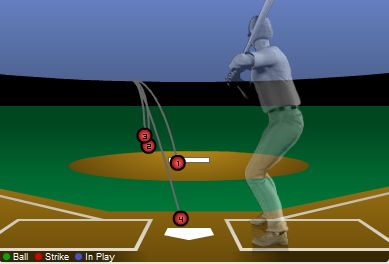A cornucopia of Tigers news that has come out today. Jim Leyland is prepared to make some changes, even if it means hurting some feelings. The skip says:
“So I’m going to change some things around here and see what happens. I think that’s important. As I said, I don’t know if it’s going to work. I don’t know if it’s going to make people angry, but that’s the way it goes.
“I don’t mean for this to sound negative, I don’t mean it that way, but this isn’t about feelings. It’s beyond worrying about egos. This is about doing the job. I’m going to try some stuff.
“We have a great group of guys and I think they’ll understand. They might not agree with it, but the manager has to do what he thinks is best for the team. If this team is what I think it is, they’ll go along with it.
“We have to get it rolling somehow,” Leyland said. “I’m not really a 40-game guy, or a June 1 guy, but you can’t just sit there when it’s not working.
“My general manager has given me a hell of a team here. I haven’t really coached it to the right flow. But I’m not going to sit still. I don’t want to be patient to a fault.”
One thing you can’t accuse Leyland of this season is being complacent. He’s shuffling batting orders, moving people aroudn the diamond defensively, giving pitchers different roles in the pen. The hope is that something sticks. Some of the moves coming out are:
Miggy drops to 6th
Jim Leyland dropped Miguel Cabrera to the sixth spot in the lineup. I have to believe that this move is more psychological that strategic. Let me rephrase that. I believe that the implications of this move will be more psychological than strategic.
Lineup configuration has a pretty limited impact on run scoring. Cabrera hasn’t put up his typical numbers, but has still been an offensive force. He has struggled with RISP to the tune of a 639 OPS. If there is a thought that he’s pressing, perhaps moving him down will take pressure off of him to drive in runs. I don’t really believe any of that and chalk it up more to sample size issues. I’m somewhat supported in this because he has a .903 OPS with men on.
Still odd that Cabrera is productive and gets moved from 5th to 6th while Sheffield was allowed to flounder at the 3 spot.
Rotation flip-flop
With the off day yesterday Leyland is flipping Jeremy Bonderman and Kenny Rogers in the rotation. I’m guessing the move is 2-fold. First, Rogers struggled a little in his last start against the M’s. He allowed 8 hits, 3 walks, and 4 runs in 5.1 innings on May 21st. Second, Rogers is a Cy Young pitcher in Oakland. In 45 career starts he is 25-4 with a 3.46 ERA.
Supposedly there is another move coming with the pitching staff.
Rodney and Zumaya news
The news out of Lakeland is encouraging for Joel Zumaya and Fernando Rodney. Both will be embarking on rehab assignments soon. Rodney is likely heading to Toledo while Zumaya will stay in Lakeland to start.
I’d guess that Rodney is probably a week or two away if he is heading to the Mud Hens. But given his problems last year and this year, I’d still be surprised if he made it through the rest of the season.
Regardless, barring setbacks both would be joining the Tigers within a month or so because a rehab assignment can only last 30 days.

